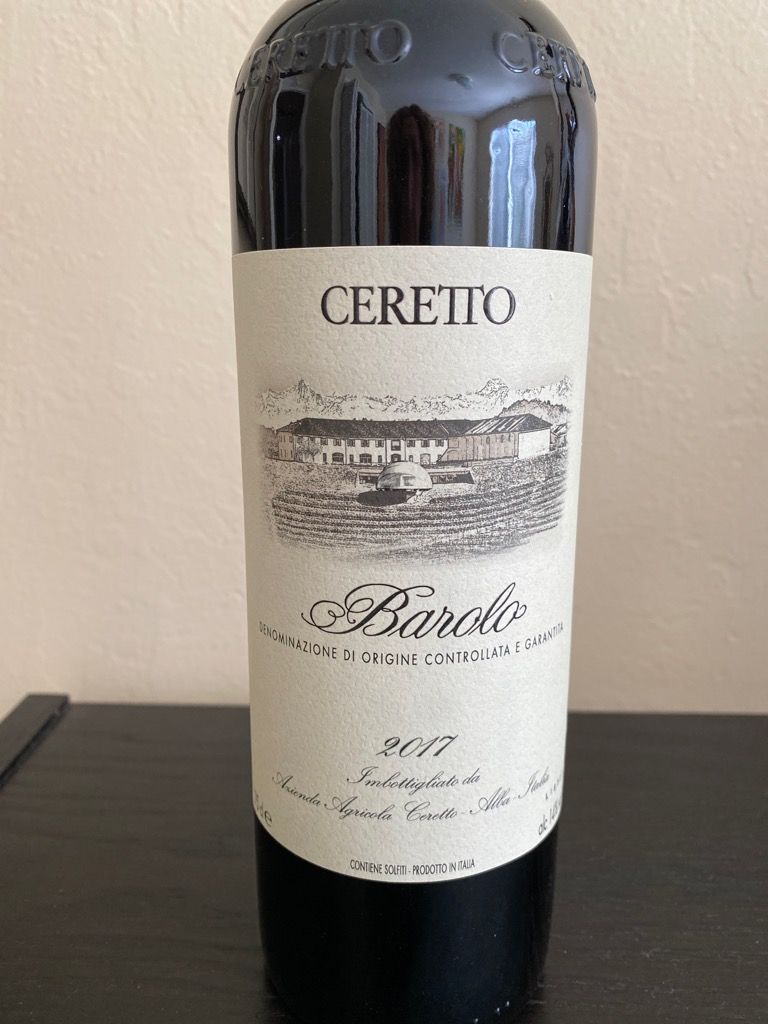
External search
Google (images)
Wine Advocate
Wine Spectator
Burghound
Wine-Searcher
Vintages
2020
2019
2018
2017
2016
2015
2014
2013
2012
2011
2010
2009
2008
2007
2006
2005
2004
2003
2002
2001
Show more
From this producer
Show all wines
All tasting notes
|
| Drinking Windows and Values |
| Community Tasting History |
| Community Tasting Notes (average 91.8 pts. and median of 91 pts. in 6 notes) - hiding notes with no text | | | Tasted by Burgnick on 7/12/2023 & rated 91 points: By the glass at Pretty Pork Factory in Shinjuku Tokyo. Cranberries, Rose petal, currants, tar, and herbs on the nose and palate. Palate was elegant and expressive with subtle sweetness. Very nice for its level. (1025 views) | | | Tasted by arnoldylchan@yahoo.com.hk on 1/31/2023 & rated 93 points: Pale garnet, cranberry, red cherry, dried rose, cedar, charred wood, chocolate, mushroom, coffee, caramel, earth. Full body and long finish. Round and high tannin. Need to keep at least 5+ to realise its full potential. (1064 views) | | | Tasted by mrgarreth on 1/14/2023 & rated 93 points: It is already showing complex development on the nose and palate, with meaty, smoky, leathery notes alongside dark fruits and warming alcohol. It's like duck roasted over burning rosemary branches with a cherry sauce and green olives. It's rich and full-bodied with a long and seductive finish. It's delicious now but will improve over the next ten years or more. Phenomenal. (996 views) | | | Tasted by Larslatour on 9/24/2022 & rated 92 points: Elegant. Ready to drink. (1293 views) | | | Tasted by apple1813 on 12/28/2021 & rated 91 points: 2017 Ceretto Barolo was powerful, complex and polished. The youthful Barolo was clear and pale ruby in colour without any sediments. Freshly uncorked, varietal aromas of sour red cherry, strawberry, rose petals, tar and liqourice jumped out of the glass. It took five hours of decanting to gain texture, and complexities of earth, dark chocolate and smoked meat.
The mouthfeel was dry and verging full-bodied, with high levels of acidity and sinewy, polished tannin. Intense flavours of tart red cherries and rhubarb transitioned into mocha, tobacco and wet stone minerals in a long spiced finish. The alcohol level was at 14%. The wine was certified organic by Agricoltura Italia.
The high levels of acidity and tannin of a young Barolo may be quite unforgiving. That's when food pairing comes into play. I can think of hearty Italian dishes, like pappardelle with slow-braised beef cheek ragł. As tannin binds with the protein and the fat of the food, rather than those on our tongue and cheek, the roughness sensation is alleviated. Spice should be used sparingly, as it accentuates the spiciness and alcoholic sensations of the wine. (1811 views) |
| Ceretto Producer websiteNebbioloNebbiolo is a red grape indigenous to the Piedmont region of Italy in the Northwest. The grape can also be found in other parts of the world, though they are not as respected.
Nebbiolo is often considered the "king of red wines," as it is the grape of the famed wines of Barolo DOCG, Barbaresco DOCG, and Roero DOCG. It is known for high tannins and acidity, but with a distinct finesse. When grown on clay, Nebbiolo can be very powerful, tannic, and require long aging periods to reach its full potential. When grown on sand, the grape exhibits a more approachable body with more elegant fruit and less tannins, but still has high aging potential.
"Nebbiolo" is named for the Italian word, "nebbia", which means "fog", in Italian and rightfully so since there is generally a lot of fog in the foothills of Piedmont during harvest.
Nebbiolo is a late-ripening variety that does best in a continental climate that boasts moderate summers and long autumns. In Piedmont, Nebbiolo is normally harvested in October.
More links:
Varietal character (Appellation America) | Nebbiolo on CellarTrackerItaly Italian Wines (ItalianMade.com, The Italian Trade Commission) | Italian Wine Guide on the WineDoctorPiedmont Vignaioli Piemontesi (Italian only)
On weinlagen-infoLanghe Consorzio di Tutela Barolo Barbaresco Alba Langhe e Roero | Union of Producers of Albese Wines (Albeisa)BaroloRegional History:
The wines of Piedmont are noted as far back as Pliny's Natural History. Due to geographic and political isolation, Piedmont was without a natural port for most of its history, which made exportation treacherous and expensive. This left the Piedmontese with little incentive to expand production. Sixteenth-century records show a mere 14% of the Bassa Langa under vine -- most of that low-lying and farmed polyculturally. In the nineteenth century the Marchesa Falletti, a frenchwoman by birth, brought eonologist Louis Oudart from Champagne to create the first dry wines in Piemonte. Along with work in experimental vineyards at Castello Grinzane conducted by Camilo Cavour -- later Conte di Cavour, leader of the Risorgimento and first Prime Minister of Italy -- this was the birth of modern wine in the Piedmont. At the heart of the region and her reputation are Alba and the Langhe Hills. This series of weathered outcroppings south of the Tanaro River is of maritime origin and composed mainly of limestone, sand and clay, known as terra bianca. In these soils -located mainly around the towns of Barolo and Barbaresco -- the ancient allobrogica, now Nebbiolo, achieves its renowned fineness and power.
map of Barolo DOCG
An interesting thread on Traditional vs. Modern Barolo producers:
https://www.wineberserkers.com/forum/viewtopic.php?f=1&t=106291 |
|




